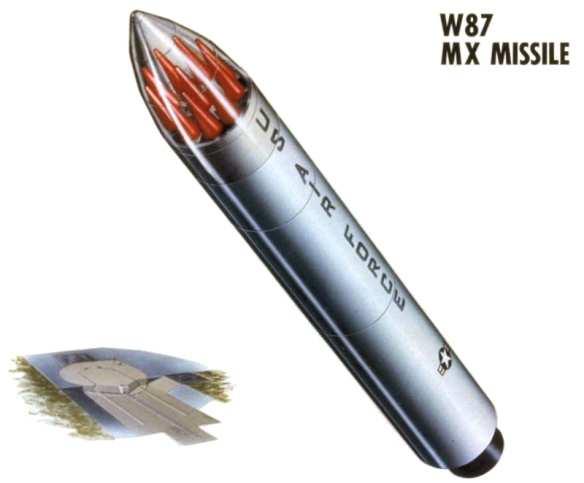
On 22 November 1982 the administration announced that the missile was to be known as Peacekeeper, and introduced an entirely new basing concept, the “dense pack”. The dense pack idea involved building super-hardened silos that would withstand more than 10,000 psi (70 MPa) of overpressure, compared to 2,000 of the existing silos, or 5,000 psi for the upgraded versions originally proposed. This extra hardness can be easily offset by minor increases in warhead accuracy. The key to dense pack concept was to space the silos so close together, about 1,800 feet (550 m), that warheads attacking one silo would destroy others incoming to attack another silo in the same pack. This “fratricide theory” was highly criticized due to the expected relative ease with which the Soviets could modify their warheads and circumvent this design. All that was required was that several warheads arrive and be detonated within a few milliseconds of each other, so the blast waves did not reach each other before completing destruction of the silo. Such timing could be easily achieved with commercially available clocks. Congress again rejected the system.[
“Dense pack” refers to a proposal made by the Ronald Reagan administration during its first term to develop a survivable basing mode for the new MX (for Missile Experimental) intercontinental ballistic missile (ICBM). It was an alternative to the Jimmy Carter administration’s proposal to deploy the MX missile on a transporter-erector-launcher so that the missile could be shuttled along a race-track system of twenty-three shelters for each missile. It was hoped that this “shell-game” would increase the survivability of the MX, but eventually the racetrack system was abandoned.
The question of missile basing was a major defense issue for the Carter and Reagan administrations. Congress, in particular, wanted to ensure that the land-based ICBM force would retain a second-strike capability. A variety of earlier proposals had been rejected as too expensive or too vulnerable to Soviet countermeasures. The Dense Pack proposal, put forward by the Reagan administration in November 1982, was one alternative that appeared to increase the survivability of the U.S. ICBM force at modest cost. Dense Pack was based on the “fratricide effect.” Instead of dispersing missile silos, it would group silos closely together so that if successive enemy warheads were aimed at these silos, the effects of earlier explosions would disable the ones following. As a result, a number of the silos would be more likely to survive. In order to destroy all the silos, a nuclear strike would have to “walk” across the Dense Pack field from south to north, and if detonations occurred too quickly, they would destroy additional incoming warheads, allowing some MX missiles to survive.
Dense Pack ran into political trouble because it would have abrogated the unsigned treaty resulting from the Strategic Arms Limitation Talks (SALT II), which banned the construction of new missile silos. The idea was abandoned in favor of deploying MX missiles in existing Minuteman ICBM silos, which would receive additional protection (hardening).
References Dunn, David H., The Politics of Threat: Minuteman Vulnerability in American National Security Policy (Basingstoke, UK:Macmillan, 1997), pp. 153–160. Garfinkle, Adam M.,“Dense Pack: A Critique and an Alternative,” Parameters, December 1982, pp. 14–23.